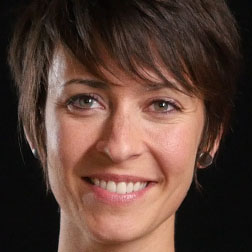It’s easy to take evolution for granted when your team is standing at a whiteboard looking at a bunch of colored sticky notes.
But the very fact you have a whiteboard, that you are standing together, and that anyone in the group can move the sticky notes are all clues to the mysterious evolution of work culture and collaboration.
If we care about leadership, governance, and participation, we can’t afford to ignore the role of evolution in collaboration today. But let me back up just a bit.
One of my biggest insights (not an original insight, alas, but still a significant one for me and my clients) was the evolutionary development of culture. It revealed how to include more and make distinctions through increasingly complex perspectives on collaborations.
You might have already heard about Spiral Dynamics, based on the work of Clare Graves. It is a particularly useful outcome from decades of post-modern socio-cultural research and study, giving us the capacity to see aggregate structures of culture or group worldviews, to anticipate how they evolve, and to guide efforts to effectively work with worldviews and help support the healthy expression of each stage.
The worldview of a group influences what the group sees and what it leaves out. What it values, and how it makes meaning of what it perceives. Worldview greatly influences collaboration, because shared meaning is one of the essential ingredients in effective collaboration.
Facilitating collaboration and change over the last two and a half decades, I’ve perceived differences between various groups and modified my approach based on the type of work culture I was encountering. But the “big idea” that really landed for me was how these differences were actually connected in an observable and consistent developmental trajectory. And, how that impacted what forms of collaboration people were interested and willing to participate in.
As a facilitator, I care about how people engage and what draws them to collaborate and work together. Understanding how worldview influences individual AND group behavior has been a huge and invaluable enhancement in how I facilitate.
Different worldviews display stylistic differences (some groups are more traditional, some more modern, some more pluralistic, some more integrative and showing features of all those differences). And they also reveal where a group / culture is evolving, because groups/cultures evolve and develop through these different stages in a predictable order.
(I’ll share more about these “Evolving Worldviews” in a future blog post.)
As an Integral Facilitator, I pay attention to key indicators in discourse, values, norms, roles and power dynamics to get a sense for the culture’s worldview. Along with other sources of information, I use this to help me consider what is most appropriate for a particular group, so that I can meet the group where its meaning-making is.
I calibrate the meeting design, techniques for group engagement, and especially my moment-by-moment responses as I facilitate—all with an eye to how my interventions can best land in the culture of the group.
For instance, based on my understanding of the group’s worldview, I’ll ask myself
- How will individuals participate?
- How much interior depth can we expect to work with?
- What kind of leadership is called for and from whom?
Ok, so you must be eager to know: what does it mean when you see everyone standing in front of a white board moving around colorful sticky notes?!
Tools that help people share their ideas are wonderful. They dramatically speed up the flow of idea generation and efficiency of the cycle time between question and response. And when we’ve filled up the wall with sticky note ideas, we might be pleased to think that it means we’ve increased participation and democratized the discussion by enabling every person to share their ideas.
Yes, maybe. But my suggestion is that we should be even more interested in what the increased participation is giving us.
Are you satisfied with “more” ideas or is a new quality of contribution also desirable? (Hint: your answer will depend on what meaning you make about a culture with a wall full of sticky notes.)
Work cultures (and groups) at different stages have different leading edges when it comes to participation. Here’s three different cultural objectives or leading edges from three different cultures I’ve worked with:
- CONTRIBUTE TO THE CONVERSATION—be empowered to participate and have healthy and constructive conversations and discussions.
- INCLUDE DIFFERENCE—become more inclusive, and open to more perspectives, different values and points of view.
- INTEGRATE AND GENERATE—share more deeply, both objective and subjective content, and make sense of paradox.
You can probably imagine how each of these feels wildly different when you’re live in the room with three different groups. What we care about, focus on, and value will dramatically change the type of conversations and collaborations we have.
Typically, the more evolved the group’s worldview, the more accessible are the “inner depths” of the culture to inform work and collaboration.
For example, groups that value depth are often interested in including, discussing, challenging and transforming the shared interior of the group. They have an easier time surfacing intangibles like attitudes, beliefs, feelings, and perceptions. And often (with the influence of skilled facilitation), they generate more whole or integrated results because they have included more along the way.
(OD professionals know this cultural territory well—they’ve been leaders in listening to the heartbeat of team and organizational culture as the business/organizational world has been evolving beyond the focus on objectivity, functional and financial performance. It’s also the leading edge in project management.)
Another attribute I look for in groups is collective self-awareness. The more evolved the group’s worldview is, then the more its members will possess capacity to take perspectives on their collaboration.
As the facilitator or influential intervenor, it’s worthwhile to ask yourself:
Does the group have self-reflective capacity or is the group more superficial in understanding its shared vision, values, beliefs and attitudes? How much is still in shadow and undiscussable, and, what is on the table and easy to include in meaningful discussions? How do they see their mission in the context of other groups?
Some groups can reflect on the big triumvirate: the task at hand, the process the group will use to carry out the tasks, and the quality of the collaboration. The group can reflect on the participation of individuals and on the collective.
In my experience, it also follows that the greater a group’s self awareness, the greater will be its capacity for shared leadership and participation, for risk taking, and for team learning—all of which are essential requirements for more agile and nimble work cultures.
So yes, we should care about sticky notes. Or, more to the point, we should care about what our use of any group engagement technologies is revealing about how we engage, what we value, and how we understand collaboration.
If you’re a facilitator, interventionist, or process designer, the next time you’re preparing for a facilitated meeting, notice what the intention of the meeting is primarily focused on. Is it organized around maximizing / optimizing the group’s mission based on its current capacity? Perhaps ideation and generating new ideas? Or does it have a more developmental orientation, e.g. an intention to increase learning, perspective-taking or meaning-making capacity?
What you find will influence how much challenge you can offer, the forms of facilitative leadership that might be required. And, it will give you clues about what technologies (like sticky notes on a white board) will best support the group to engage based on what it values and how it understands itself.




2 thoughts on “What’s the flavor of your collaboration?”
Rebecca, thank you for this very well thought out and easy to follow blog. As I read through it I had the thought ‘oh, this makes so much sense! I wish I could use it on the fly’. Then I remembered that’s exactly why I’m in IFP! I especially liked your statement: ” …we might be pleased to think that it means we’ve increased participation and democratized the discussion by enabling every person to share their ideas.
Yes, maybe. But my suggestion is that we should be even more interested in what the increased participation is giving us.” I noticed I came forward, applied more critical thinking as I pondered your suggestion. Then your hint carried me right into the rest of the article. See you soon. Hugs {{{ }}} Kathie
Pingback: Cooperation and Collaboration | Biomimetic Clockworx